Tomo No Kai
Okinawa 1997 • Okinawa 1999 • Interview with CisoTOMO NO KAI
Okinawa Karate Kobudo International Friendship Association
(Okinawa Karate Kobudo Kokusai Tomo No Kai) / by A.J. Advincula
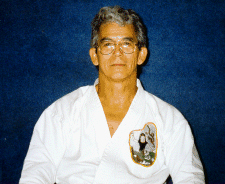
"Mensori" or Welcome to the "Tomo No Kai".The philosophy of the Tomo No Kai began long before Kensho Tokumura named it in 1997. It can be said to have started when I first arrived on Okinawa in November of 1958 as a young Marine Corps Corporal.
In 1946, At the age of eight, my father began my martial arts training in the Filipino knife and stick fighting art eskrima (escrima) and what my instructors called combat judo. Two of my instructors, Tony Navarro and Pete Rado, who were friends of my father, were "close combat" instructors in the Philippine Scouts (Army). When I was about 10 years old I also had some
training in gung fu by another friend of my father, a Chinese cook named Pang Yao. I also tried to study from books on jujitsu and anything else I could. My father at the time worked for the Army Air Corps and he started me training with my first instructors. My father brought returning GI's, who had studied Asian martial arts, over to instruct me in their art, whatever it was. So, I had a basic understanding of different Asian martial arts before I arrived on Okinawa.
I began my training in Isshinryu Karate on my first day of liberty which was about three or four days after arriving on Okinawa. This was not by design but by chance. As all of those in the military know, when you first report or arrive at a new duty station, you must "check in" to all the different places on the base, for example; sick bay (where one goes for medical treatment), disbursing (where ones pay record is located), mess hall (now called a dinning facility), chapel, special services (where one goes for recreation and sports), and other places that are important to your military functions. At each of these places the administrators will sign your "check-in- sheet". After you get it signed at each location, you report back to your unit. If you get all the signatures, your unit knows you can locate them and now you can go to work. After an indoctrination about Okinawa, its people and customs, and what you can or can not do, you are allowed to go on what the Marines and Navy call "liberty", or "go-to-the-ville" which is another term we used.
When I first checked in to Special Services at Camp S.D.Butler, which was located next to Camp McTureous, near the village of Kawasaki, I saw a large sign on the wall which read; "Sign up for free judo lessons". So, when I reported to my NCOIC (Noncommissioned Officer In Charge) who was a Sergeant, he asked if I had any questions about Okinawa, my job, or anything else. I said, "Yes, how do I sign up for free judo lessons?" He answered, "Why judo? You can study karate in the ville (village) from Papasan." I replied, "Karate, they have karate here?" "Yes, this is where karate originated from. We have one of the top karate instructors off base", he replied. I asked, "How much will it cost?" The Sergeant said, "Its free. Special Services pays for it. Why take judo when you can study karate. I'll take you. I'm a green belt from Papasan". I don't recall him mentioning the style or the name of the instructor although, he might have. At the time, these names would have been strange to me anyhow. I remember my first liberty or first venture into the village of Agena. The Sergeant (I forget his name) took me from our base, Camp Smedly Butler, on a bus located outside the base, to Agena Village where it stopped about a half a block away from Tatsuo's dojo. We walked to the dojo and I remember as we got closer, I could hear strange smacking sounds of what I later learned was someone punching a "makiwara". I remember the Sergeant led me through the entrance door into the dojo. There were several people in white karate "gi", striking or punching "makiwara". Some were doing karate moves which I later found out to be "kata". He took me straight up to Shimabuku Sensei and told him he brought a new student. He introduced Tatsuo as "Papasan". I signed up, filled out a special service card, Sensei stamped it and sold me a white karate gi. I started my first day of what later I would learn was Isshinryu Karate.
On my first tour of duty, I worked at the Camp Butler carpenter shop which at the time was located at Camp Courtney near the Village of Tengan. I worked with Okinawans and it was from them I learned who "Papasan" was. When I told them I was studying karate from "Papasan", they admonished me and said I should call him "Sensei". From that day, I began calling my instructor, Shimabuku, "Sensei". This was my first introduction to the culture of Okinawa. I remember that most of the Americans learning Isshinryu were Marines, with a few Navy medical personnel who were attached to our sickbay. Most continued to call Tatsuo Shimabuku "Papasan". The senior Americans at the dojo never tried to correct this fault. Later, when some of us became senior, it was corrected.
I remember when I first arrived on the Talagega, a Navy transport ship to Okinawa. I had my first experience of cultural shock. Many of the roofs on houses were covered with either red or gray concrete roof tiles or had thatched roofs. At the time, you could still see some of the all-grass houses that were made of "miscanthus", whose strong, brittle, hollow stalks resemble small bamboo woven diagonally. This was used for walls with the thatched roofs. There were very few cars but many bicycles, three wheeled motor vehicles, taxies and buses. The names I remember of some of these vehicles were Datsun, Hino, and Mitsubishi. Most signs on the store fronts were in Japanese but many near the military bases were in misspelled English. Okinawans dressed in kimonos, jenbai, and in various American clothes. Many of the Okinawan males wore parts of U.S. military clothing. Many wore "geta"(wooden clogs), straw sandals, rubber shower shoe sandals, and some were barefooted. Some of the older men could be seen riding bicycles while their wives walked behind them. Women worked at hard labor on the streets doing road repairs or cleaning the street. Only the main roads were paved and there were very few of them. There were many open markets with various fruits, vegetables, and roots being sold in small makeshift stands or booths. Fish and large slabs of meat were also present in the fish or meat market. Octopus and squid were also seen and Americans would always openly joke about what to them was strange and exotic foods. Many of the older women over sixty years could still be seen with tatoos on the back of their hands.
Black market American goods could also be seen openly being sold in the shopping areas. I remember that insect repellents in olive drab cans were in high demand because of the numerous bugs and mosquitoes on this semitropical island. Cigarettes were sold in packs or individually. Many of the Okinawan men could be seen smoking a "kiseru", a very small pipe where only a little amount of tobacco was placed in it and only a few drags could be puffed from them before it had to be recharged. Some would just place a regular cigarette in the "kiseru" like a cigarette holder. On numerous occasions I saw Sensei Shimabuku using the "kiseru". On base, the Marines had house boys or house girls who washed our clothes or shined our boots and shoes. They also would starch and press our utility or work uniforms and blocked our utility covers (hats), starching and ironing them. As a Corporal pay grade E-3 at the time, I made about $90 a month. While this amount was small in the U.S., on Okinawa it was a hefty sum. On mainland Japan the exchange rate was 360 yen to a dollar. By the time I arrived on the rock (Okinawa), dollars were being used instead of Okinawan yen which was different than the Japanese yen. Okinawa was under the administration of the U.S Government and would be until its reversion back to the Japanese Government on May 15, 1972.
I studied with other now well known Americans. Harold Mitchum had started before me in March the same year. Others who started after me were Steve Armstrong, Bill Blond, Don Bohan, Jake Eckenrode, Clarence Ewing, Sherman Harrill, Louis King and Ed Johnson. Kensho Tokumura, was an Okinawan schoolboy who was already studying Isshinryu before me. It is Tokumura who eventually will give the "Tomo No Kai" it's name.
After learning that Isshinryu was a combination of Gojuryu and two modes of Shorinryu karate, I always wondered what Shimabuku Sensei had added or deleted from his system. On one occasion while relaxing after a class, Shimabuku Sensei and several others students were sitting around a table drinking beer and "awamori"(a Okinawan brandy made from rice) and pine-juice (pineapple soda) to mix with the potent "awamori". Tatsuo asked which was the best bottle? On the table were various sizes of bottles. Some present picked large bottles and others picked the smaller bottles depending on what they were drinking. Tatsuo replied that all bottles were good and that size had nothing to do with which was the better bottle. He explained that all of the bottles served a purpose. At the time, early 1959, Isshinryu was only three years old and some of the other Sensei from other styles were knocking this new style. I believe that this is the reason Tatsuo told the story so that we would understand that all styles were good. Tatsuo stated that from Shorinryu he took the kata Naifanchi and from Gojuryu he took the kata Sanchin. Tatsuo explained that Shorinryu had no Sanchin and Goju-ryu had no Naifanchi. He said that Naifanchi, the softer of the two kata, was the Mother and Sanchin, the harder of the two because it is performed using dynamic tension, was the Father. From this union came Isshinryu, the offspring or baby. The kata Naifanchi is performed going in the direction left then to right while Sanchin goes forward and back. Between the two bonded in union (+) is Isshinryu. It is from this philosophy that the Tomo No Kai began. The following years, because of this, I have trained in Gojuryu, Shorinryu, Uechiryu, Hindiandi and Kobudo. To this day I will study and learn from other Sensei to get a better understanding of what Shimabuku Tatsuo taught me. He studied from several different Sensei in different styles and continued after he was in his fifties. All martial arts are good and this is the reason for the Tomo No Kai, to get a better understanding of all things Okinawan and to learn not only about Ryukuyan martial arts but also its cultural aspects. I conducted four tours to Okinawa, 1994 to 1997, and billed them as "Okinawan Cultural Martial Arts Tours". In 1994, I was told of another group of people from another style of Okinawan karate that was going to do a group tour to Okinawa and were going to stay on one of the military bases. Someone suggested that I do the same and stay on one of the military bases to save money. I replied, "No, if you want to learn about the cultural of Okinawa you must live with the Okinawans as they do." Mr.Jeff Perkins has already explained this in his article about going on his first trip to Okinawa in 1994. Kensho Tokumura, who was an Isshinryu dojo classmate with me in 1958, and Kotaro Iha who I studied Kobudo and Shorinryu from 1975, have helped me in my quest for knowledge as has Horoshi Ikemiya, my brother-in- law, who helps especially in translating writings in Chinese.
Again, I want to welcome you to Okinawan Karate Kobudo Kokusai Tomo No Kai,......."mensori".
In 1994 I traveled to Okinawa for the first time. There was a bit of apprehension on my part. I had this romantic martial vision of the "Island of Karate," probably from the stories that have been fed to me through my martial arts career and the "Karate Kid" movie series. I was worried that real life would not come close to my visions.
The trip in 1994 was far from disappointing. I met a lot of great people, Americans and Okinawans, and trained in several Okinawan dojo. Sensei Jim Advincula, who sponsored the trip with his wife Michie, billed it as a "Cultural Tour." The first night, after travel for about 22 hours, we landed in this very quaint hotel in Gushikawa City, Okinawa. I like to call the area "Okinawan Only Turf" because the Westerners in the area were mostly non-existent. The rooms, that you shared with another on the tour, were small but clean. Everyone shared a common bathroom and shower. This posed a bit of an initial problem for the women on the trip who were quick to make "shower shifts" enforced by great bodily harm if violated. The Mama-san who ran the hotel did not speak a word of English. I'll be honest. That first night I thought to myself, "what did you get yourself into?!" Some in the group voiced this opinion outwardly. Luckily, I wasn't that foolish. To sum it all up from '94, Sensei Advincula obviously knew what he was doing with our accomodations and location. He threw us right into the middle of Okinawan culture, causing us to struggle with the customs and language. Now, I would have it no other way. Many martial artists travel to Okinawa to further their knowledge. They train in a dojo everyday and never really venture out to learn the culture of Okinawa. I believe they're missing the boat. One doesn't necessarily have to be in a dojo to train. I learned more about martial arts experiencing the culture of Okinawa than I would have training in a dojo everyday. This "Cultural Tour" was really the way to go. But, as much as I enjoyed the trip, I really didn't think I'd ever be back.
August 1997 gave me an excuse to travel back to Okinawa. The festivities commemorating the dedication of the Okinawa Prefecture Hall of Martial Arts (Budokan) interested me (actually, I think I was always looking for an excuse to go back). It was a small group that traveled. Again, Sensei Advincula and his wife Michie were our tour guides. Robert and Ernest Mullen from the Canton, Michigan dojo of Sensei Sam Santilli went for the first week. Also along for the full trip was Carol Womack of Tyler, Texas. This was the third trip for Carol. She was to compete in the Budokan Tournament and demonstrations under the flag of the Ryu Kon Kai, the Kobudo dojo we train at on our tours which is headed by Hanshi Kotora Iha, renowned in Central Okinawa for his Bojutsu. Carol did a great job, making it into the finals.
During our first initial days on Okinawa, we became "Typhoon Certified." This island was hit by "Typhoon Winnie." We again stayed at a very nice, but quaint, hotel in Tairagawa, Gushikawa. As some of you Isshinryu students know, Master Tatsuo Shimabuku opened his first dojo in Tairagawa. Most of the dojo on the island were preparing for the tournament and demonstrations related to the dedication of the Budokan. Because of this, we held off most of our martial arts related contacts until after the festivities. Also, Carol had to be at Kotoro Iha's dojo daily to practice for her performance.
DEDICATION OF THE OKINAWA BUDOKAN
The Okinawa Karate and Kobudo World Tournament and Seminars commemorating the dedication of the Okinawa Budokan ran from August 21st through the 25th and appeared to be well run. The organizer was Mr. Sakumoto, Kata World Champion, or Ryurei-ryu from the Japanese mainland. His assignment, though he is more than qualified, brought a boycott by some of the Okinawan dojo because Mr. Sakumoto is from the mainland. As you can see, there are politics everywhere. The Budokan building in itself is quite beautiful and spacious. It's located in the Southern part of the island in Naha and is a "must see" for those traveling to Okinawa. There is also a Karate and Kobudo museum in the Budokan, that is, for those of us interested in the history of Okinawan martial arts, worth the price to Okinawa in itself. The museum holds many old photos of martial artists from the past, old martial arts documents and ancient weapons. It also has on display a bust of Chojun Miyagi as well as the gi and obi of Kanei Uechi and Chojun Miyagi. The obi of Taira Shinken and red belt of Choshin Chibana are also on display.
The opening ceremonies had Okinawan dance, martial arts dojo demonstrations and performances by some of the older Grandmasters on the island such as Hanshi 10th Dan Shoshin Nagamine, first generation student of Chotoku Kyan and Choki Motobu, of Matsubayashi Shorin-ryu; Hanshi 10th Dan Katsuya Miyahira, first generation student of Choshin Chibana, Shorin-ryu; Hanshi 10th Dan Eiichi Miyazato, first generation student of Chojun Miyagi, Goju-ryu; and Hanshi 10th Dan Seikichi Uehara, first generation student of Choyu Motobu, Motobu-ryu. These elder statesmen of Karate performed admirably. Special appreciation plaques were also presented to these elder Grandmasters of the martial arts as well as other notable Grandmasters.
KOBUDO SEMINAR WITH EISUKE AKAMINE
I attended two seminars with two of the Senior Grandmasters on the island. My first seminar was in Kobudo with Hanshi 10th Dan Eisuke Akamine, first generation student of Taira Shinken and his heir apparent on Okinawa. Master Akamine is the President of the Ryukyu Kobudo Hozon Shinkokai which was founded in 1955 by Master Taira Shinken (1897-1970). This association was preceeded by the Ryukyu Kobujutsu Kenkyu Kai, founded by Taira Shinken's teacher, the late Yabiku Moden (1878-1941). Grandmaster Akamine is confined to a wheelchair and the seminar was conducted by several of his instructors. Shushi No Kon Sho bo kata was taught as well as a group doing sai. I chose the bo group and now will add this kata to my training. I found out later form one of our cultural teachers the the "Shushi" of the bo kata is Chinese. "Shi" means mister or sir, and "Shu" is the person or family name.
Since Isshinryu Kobudo has lineage to Master Akamine's Kobudo through Taira Shinken, I took special note of the way techniques and stances were performed. When I slapped my bo under my armpit, I was corrected. The Akamine group aligns the bo directly under the pectoral muscle along the rib. Personally, I was not comfortable with this. There's no meat there covering the bone. I also noticed that in a strictly Kobudo dojo the stances are much deeper. I also found this to be so in Hanshi Kotaro Iha's Kobudo dojo while being corrected during training. Teachers who are strictly Kobudo on the island look down a bit upon Karate systems who have Kobudo that is not taught from a Kobudo dojo. I came back from the seminar with several alterations to the Kobudo I practice.
SEMINAR WITH MASTER SEIKICHI UEHARA
The second semianr was conducted by Hanshi 10th Dan Seikichi Uehara of Ryukyu Oke Hiden Motobu Udun Ti (Motobu-ryu) Kobujutsu and his group. Master Uehara is in his 90's and appears to be the picture of health. It was obvious from his demonstration during the opening ceremonies and the one at the beginning of the seminar that he loved to perform. According to his instructors and literature that was handed out, Master Uehara was taught the secret bujutsu of the Okinawan Royal Family by his teacher, Choyu Motobu, brother of Choki Motobu. Choyu was taught the royal "Ti" by being the first born son. The system was not handed down to Choki. Motobu Udun Ti was founded by Sho Koshin Motobu Oji Chohei, sixth son of King Sho Shitu, tenth King of the Ryukyu Dynasty's second Sho family reign. It has been handed down through the generations in the Motobu family, which is the royal family of the Ryukyu Kingdom. The "Udun" portion of the name "Udun Ti" means "having the status of the royal family." Therefore, Motobu Udun means "the royal family Motobu." The "Ti" portion of the name means "hand" and by extension "bujutsu" or "martial arts." Accordingly, Udun Ti means "the bujutsu of the royal family." Many unique weapons were used during the demonstration such as a broom, garden hoe, and other household tools. The system's main empty-hand emphasis is on "defense without killing" and thus, grappling (tuite). I felt first hand the strength in Master Uehara's tuite by being encouraged to be his uke. The strength in his hands was incredible. I felt like I was being manhandled by a martial artists of a much younger age. He also enjoyed showing this "Gyjin" (foreigner) his art, rolling me around the tatami mat like a child, talking as he went. He then let go and giggled devilishly at my immobility. We then were taken through the Motobu-ryu basics. They are quite different from martial arts styles that I have learned and observed. Much of their technique, which does included punching and kicking, is done on the balls of the feet. The punch is twisted fully to a thumb down position and thrown from a Western boxer type stance. We were also taken through the "Dance of the Martial Arts." An Okinawan Odori dance which was created in times past when Te practice was outlawed and had to be hidden in dance. It was beautiful and lethal.
SEMINAR WITH MASTER JOEN NAKAZATO
Sensei Advincula and Carol Womack attended a seminar with Hanshi 10th Dan Joen Nakazato, first generation student of Chotoku Kyan, Shorinji-ryu. Master Nakazato states that Chotoku Kyan taught eight empty-hand kata and one weapon, Tokumine No Kun. He was also adamant that the kata we know as "Naihanchi" should be properly called "Naifanchi." He also spoke of too much wasted motion in current practiced kata. This was not so in older times.
KOBUDO SEMINAR WITH SENSEI KOTARO IHA
We also attended a third seminar on Kobudo, off campus of the Budokan, at the Ryu Kon Kai Dojo of Hanshi 9th Dan Kotaro Iha. Sensei Iha is the dojo that the Advincula tours ahve trained Kobudo in while on the island and the Kobudo dojo that Sensei Advincula has trained in for several years. He is a "tomo dachi" (good friend) and often helps us with our Okinawan culture as well as Kobudo. In 1994, I got an introduction into Ryu Kon Kai Kobudo. Upon my return from that trip, I did not change the way I did my waepons. This trip, I made a commitment to Sensei Iha to practice Ryu Kon Kai Kobudo and have already started to change my technique with the main difference being the bo used on the outside of the arm as opposed to under. I was shown by Sensei Advincula how this technique is stronger. I agree and will begin practicing my bo in this manner. At the seminar, we learned Nicho Sai Kata and Tekko (Okinawan metal knuckles). The Tekko Kata is one of Sensei Iha's design. When asked the name of the kata, he stated "Tekko." During a night on the town, Sensei Iha called it "Iha Tekko" and smiled. I will call it "Iha No Tekko" in honor of its creator so the author will not be lost to history.
TRAINING, CULTURE, AND HISTORY WITH KENSHO TOKOMURA
A highlight of our visit is always our time spent with "tomo dachi" Renshi 6th Dan, Kensho Tokomura, former Isshinryu teacher and first generation student of Master Tatsuo Shimabuku, now practicing Goju-ryu under Senior Grandmaster Eiichi Miyazato. This man is a true friend and martial artist. A better heard cannot be found anywhere in the world. He often teaches us and translates Okinawan Hogen terms and phrases as well as introducing us to finer Okinawan cuisine. Sensei Tokomura is one of two Captains in the Okinawan Guard which mans American military establishments. He is liked and respected on the island by numerous professionals and martial artists from many styles. During our initial visit with Sensei Tokomura, we asked if he could get us an in-depth interview with Senior Grandmaster Joen Nakazato concerning history of Chotoku Kyan. Sensei Tokomura felt it would be a better interview to talk with a long-time friend of his father's, Mr. Taira Kazuo. Taira Kazuo was retired from the Governor of Okinawa's office in the Traffic Division. He also had been a student of Chotoku Kyan. While reviewing the booklet handed out at the Joen Nakazato seminar, Sensei Tokomura noticed an old group photo of the Kyan dojo. In the photo were Joen Nakazato and Taira Kazuo.
During this trip, I was determined to come off the island with martial arts related calligraphy that could hang in the dojo. I especially wanted calligraphy of hte katakana or kanji for hte Okinawan Hogen martial arts term, "Chinkuchi." When I asked some of our knowledgeable Okinawan friends, they sort of laughed. They found it very odd that someone would want this physical martial arts philosophy printed on paper. We then asked Sensei Tokomura. He was shown katakana for the term that we had and promptly said he had someone who worked for him on base that could probably do it for us. He said he would also have the person print the kanji for the martial virtues that he has hanging in his dojo: COURTESY, FIGHTING SPIRIT, and PATIENCE. The next visit with Sensei Tokomura, he did have these gifts for us. The calligraphy for "Chinkuchi" was very interesting. Chinkuchi was written in katakana (from my understanding the older writings of Okinawa), next to it were the writings for "impact" and then a large display of kanji which reads "destruction power" (Chinkuchi). Many times during this trip, as we would be socializing with Sensei Tokomura and others, he would call my attention and demonstrate and shuto moving slowly to his other open palm. When his shuto reached approximately a 5-6 inch distance from his other hand, it accelerated at great speed, obviously hitting with much impact. He would say that, "Chinkuchi destruction power," then show a measurement of about 5-6 inches with his hands.
Sensei Tokomura has many fond memories of who he calls "Tatsuo Sensei" and is always quick to share them. On this trip, he related his first Isshinryu Karate lesson in 1958 to Carol Womack and myself. He stated that he had begun Shorin-ryu Karate at the High School Karate Club. Sensei Tokomura approached Tatsuo Shimabuku at his residence, requesting that "Tatsuo Sensei" teach him. Master Shimabuku agreed to teach Tokomura and brought him to the dojo. "Tatsuo Sensei" asked Tokomura to demonstrate punching he had learned. Tokomura demonstrated his twisting punch with "Tatsuo Sensei" demonstrating his vertical punch right next to him. Shimabuku told him, "Tokomura-san, you throw three punches when I can throw six!!" Tokomura then began Isshinryu Karate and its famous vertical punch.
Tokomura also related a story of how Master Shimabuku used to keep his knuckles conditioned while not actively training in the dojo. Sensei Tokomura stated that Master Shimabuku would often sit and watch class. While seated, he would brace himself on the floor with his clenched fist, on the first two knuckles, at the side or behind his body. He would periodically switch hands. I told the story as related by Tokomura to Sensei Advincula. He stated that this was very common with many of the older teachers on Okinawa and that he had learned this from his Hindiandi teacher. Sensei Advincula related a story when he was assigned to a very long and involved Marine Corps training class where long hours in school hindered his karate training in the dojo. He would use this technique daily and says after the class, his knuckles were more conditioned than before! This technique is also great support for your back!
Training at Sensei Tokomura's dojo is always informative and enjoyable. We had the pleasure of learning a tekko kata created by Tokomura called, "Tokushin No Tekko." "Tokushin" means the "heart of Tokomura." Sensei Tokomura has demonstrated this kata in Hawaii and Hong Kong. The unique thing about this kata is in the design of the tekko used. They are two "C" shaped rounded pieces or iron that are welded to each other in opposite directions, causing an open "tear drop" to occur in the middle for the grip. The ends of each "C" are sharpened to a deadly point. A very simple but effective weapon. This type of tekko is also displayed in the Budokan's martial arts museum.
It is always a pleasure and learning experience when we visit our "tomo dachi," Sensei Tokomura. I have never met a nicer and more giving man in any endeavor in my life.
INTERVIEW WITH MR. TAIRA KAZUO
Mr. Taira Kazuo arrived at our hotel in the late afternoon of August 29th. The interview was set up by Sensei Kensho Tokomura. Mr. Taira has been a long-time friend of the Tokomura family.
During the interview, he stated that he had trained with "Chan Migwha" at the Agricultural High School Karate Club from 1941 to 1943. Mr. Taira described Kyan as a small man, showing that his teacher came up to ear level on him. He stated that no Karate was practiced during the war. Mr. Taira remembered the names of several of the kata practiced in the dojo: Gojushiho, Ananku, Passai, and Naifanchi. He believed they practiced three Naifanchi's. He also mentioned a unique kata that was created by Kyan named "Paranku." Mr. Taira proceeded to get out of his chair and perform a small portion of "Paranku" that he had remembered. Later discussions with the Mama-san who was the proprietor of our hotel revealed that "Paranku" was also the name of an Okinawan Odori dance. This information can lead one to think several ways. One is that it may have been an old kata that was hidden in Odori dance from ancient times. Also, it could have been a kata created by Kyan and named after a dance which could have been the incentive for Tatsuo Shimabuku to name his creation "Sunnusu" after a family dance.
Mr. Taira also mentioned some very interesting things about the teachings of "Chan Migwha." He stated that Chojun Miyagi was known for his grip and Kyan was known for his open hand techniques such as shuto and nukite. He mentioned that Kyan would often place two containers with substance next to his sides and alternate thrusting his nukite into the containers. Mr. Taira demonstrated that Kyan practiced short distance power, Chinkuchi. He stated that the practice of the "Tiger Style" from Saipan, where they strike from a long distance was incorrect according to the teachings of Kyan. Short distance power was better.
Taira Kazuo stated that he had observed the Sempai (seniors) in the dojo practice sai kata and Sanchin. He did not personally learn these forms because he was Kohai (junior) but he did observe and remember them being practiced.
After the interview, we were informed that Mr. Taira Kazuo had never been interviewed by anyone concerning his training under Chotoku Kyan. It appeared that he enjoyed talking about his late Karate teacher and asked Tokomura to call him again when his American friends come to Okinawa. Mr. Taira Kazuo is going to be asked by Sensei Tokomura to be a member of the Okinawa Karate Kobudo Kokusai Tomo No Kai. It will be quite an honor to have this gentleman as part of our group.
OKINAWA KARATE KOBUDO KOKUSAI TOMO NO KAI
During my first trip to Okinawa in 1994, there were discussions about forming a martial arts association with our Okinawan friends who were in Shorin-ryu, Goju-ryu, and Kobudo. It woudl be a Chubu (Central) Okinawa Karate and Kobudo association of which we would be members. Not being involved in any other martial arts association, this interested me. Mainly because of hte direct link back to Okinawa. These discussions took place shortly after we left the island and was during a large "compi" (party) that we held in our hotel. After further trips, I would ask Sensei Advincula if there had been any more discussion about the Chubu martial arts association or whether it was just "beer talk." The answer I would get was that it really was never discussed much more. Sensei encouraged me to bring it up this trip.
On 08-25-97, in room 101 of the Harbour Hotel in Tairagawa, Gushikawa, Okinawa, I asked Sensei Kensho Tokomura about the discussions that started in 1994. An expression of excitement came upon his face and he asked for a pen and paper. He then wrote down in kanji and English, "Okinawa Karate Kobudo Tomo No Kai." This translates as Okinawa Karate and Kobudo Friendship Group. He did this so quickly it was evident that he had been thinking about this for a long time. Present for this was Sensei Advincula, Carol Womack, and myself. Everyone immediately loved the name! Discussions began concerning the purpose of the association. Everyone agreed that it would NOT involve the giving of martial arts RANK and that the association would have "no style." Karate is Karate and Kobudo is Kobudo. This unique group would be for those who had a common interest in cultural exchange with Okinawa, with a focus on martial arts. Knowledge would be the primary goal of the group. Members would have a direct connection with Okinawa for travel, training, and Okinawan culture. There are non-martial artists in the group who are our Okinawan cultural teachers. Since this involved members in the United States, Sensei Tokomura then added the word "Kokusai" to the title which means "International."
So, the Okinawa Karate Kobudo Kokusai Tomo No Kai was born. Seminars are forthcoming with the first International Seminar being tentatively scheduled for the Oceanside, California area, September 1998, featuring Sensei Kensho Tokomura, a very knowledgeable martial artist and "tomo dachi" from Katsuren, Okinawa.
THE CULTURE OF OKINAWA
The trip would not be complete without experiencing the many wonderful cultural events that occur on Okinawa.
We arrived during the "Obon" (festival for the dead), where the Okinawans believe that their deceased relatives come down to earth to visit. Michie Advincula's mother and family allowed us to watch their "end of Obon" household ceremony that occurs honoring the deceased relatives as they make their journey back to the heavens.
The "Eisa" dancers were plentiful in the area of Gushikawa where we stayed. These are a drum and dance group of teenagers who perform an ancient dance for good luck and good fortune usually around businesses but are also requested by many homes.
Our group attended a sort of "subdivision block party" to honor the elders in the neighborhood. This was conducted in Taba, which is an area in Tairagawa, Gushikawa. Many of the senior elders were honored with beautiful plaques given by local government officials. We were guests of Sensei Advincula and Michie's brother-in-law, Hiroshi, who is a former city councilman and still a very prominent individual in the community. Hiroshi-san is our number one cultural teacher on the island. He is always quick to explain the stories about Okinawan dance and ceremony as well as to volunteer us to participate. At the Taba festival, Sensei Advincula and myself participated in Odori dance and Carol Womack demonstrated a bo kata.
After hours, we would be introduced into the Okinawan night life by Hiroshi-san, Sensei Tokomura, and Sensei Iha. My "Karaoke" voice became very familiar with old Elvis tunes!! At one local establishment, we were coaxed to go on stage to replace the Okinawan band that was playing traditional music. We were dressed up for photos in old straw Okinawan farmers hats, posing with the band's samisens (kind of guitar) and drums. We also performed Odori dance with a professional Odori dancer in the same social club. On another night, Carol Womack and myself actually played the large Okinawan drum on stage with a traditional, professional Okinawan vocalist who played his samisen.
We also found time to visit many of the historical sites on the island such as the Shuri Castle grounds, the site of past Okinawan royalty; Tatsuo Shimabuku's tomb; Mabuni Hill (Suicide Cliffs), the site of many World War II monuments and a continuous wall of names, modeled after the Vietnam Wall in Washington, D.C., which listed names of all known dead from the Battle of Okinawa, from every country including the United States; Shureido Martial Arts Store in Naha; the Chinese Gardens in the old Kume Village area (now Naha), commemorating the 36 Chinese families that settled in Kume; the monument honoring Kanryo Higaonna and Chojun Miyagi; and my favorite, the Orion Brewery in Nago (Northern Okinawa) which is beer brewed exclusively in Okinawa that was not exported. We now hear that it can be found in Hawaii!! Hopefully soon, it will find its way to the mainland U.S.!!!
Well, as you can see, the trip was full of cultural experience, travel, knowledge, and friendship. My thoughts on Okinawa after my second trip ........................................ I WILL go back soon!
Photo: Tomo no kai - Okinawa 1999 Photo: Bo defense on Okinawa At the 9th of April 1999 I arrived via train from Emmen on Schiphol airport. At the terminal I hear that my flight to Taipei (via Bangkok) has been canceled. That's a good start I think. After a journey of 35 hours I finally arrive at my goal, Naha airport, Okinawa but without my luggage. It appeared to be in Bangkok and with 'some' effort I get it back after three days. At the airport I meet with one of the other members of our tour group Cherry Douglas who was on her first trip to Okinawa. Cherry had arrived from a different airline from the U.S.A. Advincula's in laws, Hiroshi Iekimiya and his wife, Michie's sister Yasue, and brother Masuyuki met us at the airport and we recieved a warm welcome from them and all together got acquinted. A few hours later Sensei Arcenio J. Advincula the trip coordinator, and his wife Michie, and Byron Marriner (third trip to Okinawa) arrive. Unfortunately Byron had to leave on 13th of April because of an emergency. From the Naha airport we went in a van and car to our hotel (Harbor hotel) in Tairagawa, Gushikawa City, where we met the lady who ran the hotel. We dropped off our luggage at the hotel and went to Michie's mothers house and we had a welcome party in a relaxed atmosphere. I felt directly at home and became familiar with everybody's names. A few days later I met Jeff Perkins and Carol Womack, who respectively were on their third and fourth trip to Okinawa. I received the nickname 'Bozu' (Buddhist priest) from Kotaro Iha because of my short haircut. In the following days (until the 29th of April) I shall see a lot of things and learn and experience a lot about the Okinawans which I will take with me for a long time, if not forever. The first mistake I made and which I will never forget is to regard Okinawans as Japanese. I made reference at Iha Sensei and Hiroshi-san at Iha's dojo and immediately corrected,"We are Okinawans, we are not Japanes." Both replied. Okinawa always was independant and you can feel that everywhere you go. Although there are a lot of influences from Japan and other countries, and because of intensive trade by sea with the whole region and the American bases they still retain their own cultural. KARATE / KOBUDO The karate lessons were given by Kensho Tokumura in his dojo (Katsuren). He explained and corrected me on posture, punch- and kicking techniques and Seisan kata (accents, bunkai and tempo). In spite of the communication problem Tokumura-sensei is well able to show me his intentions (karate technical). Tokumura despite his age (58) is a very supple and enthusiastic teacher who is full of energy and has tremendous power. He also taught us the kobudo kata Tokumine no eku. An eku is a paddle which is used in small fishing boats. In these kata there are combinations of different defensive, strike- and thrusting techniques. You can even find a 'shoveling sand' technique in it, to where one uses the eku to throw beach sand into your opponents eyes to blind the sight of your opponent. Kotaro Iha (60) instructed us concerning diverse (Ryu kon kai) kobudo-kata. Ryu Kon Kai stands for Ryukyu Bo Association but he also teaches sai, kama, tekko, three section staff, nunchaku and tanto. His dojo, located at Taba, Gushikawa, is walking distance of our hotel so we had the opportunity to train there every day (except sunday). Until this tour to Okinawa, I 'only' had practiced the kobudo taught in Isshinryu, so these weren't the easiest lessons for me. Greeting, posture, positions, handling of the bo (outside of the arm) and techniques are different from the way (Shinken Taira / Chotoku Kyan) I trained kobudo thus far. Most of the times we trained at Iha's dojo we practiced doing the bo kata Shu Shi no kun, Sakugawa no kun and Choun no kun. These are practiced at every work out. Beside that we practiced basic-kata with sai, tuifa and nunchaku. Besides kobudo, we did some basics of Shorinryu. For Kotaro-sensei, kata-training is essential for following 'the right way' (budo), which is very distinct during his lessons. Photo: Shinsho Shimabuku and his mother (Uto) During this tour we visited Shinsho (Tatsuo's second son) three times. Shinsho has been born in 1941 and was a construction teacher. The visits were not too long; Shinsho got tired fast because he was recovering from a stroke. In spite of this Shinsho made a good impression on me. He is a quiet, gentile and intelligent personality who takes time to answer all our questions and is very hospitable. The interviews were hard to follow for me because of the language barrier. Happily Carol made video recordings and Michie interprets, so I will be able to see everything at ease again. During the first interview Advincula received a present from Shinsho. It was Tatsuo Shimabuku's bo-cover. Tatsuo told Shinsho while he was lying on bed at the hospital after his stroke in 1975: "This bo cover should be given to Nagle, Armstrong or Advincula....". Shinsho stated that Tatsuo made it himself (some 50 years ago) and put it under his pillow during his stay in hospital. Following are some remarkable episodes of Shinsho about stories of where I'm sure people will have different opinions about: Photo: Advincula (eku) and Marien (sai) at the beach Sightseeing Okinawa Of course there also was time for sightseeing and visits. Amongst others we visited Hama Higa where you can find traditional built houses. Wooden buildings with typhoon-proof roofs, Shisa (Guard lions made of pottery), Himpun (barriers at an entrance) and walls built of coral or limestone give a characteristic view of old times. Also the Nakamura-house (house of a living rich farmer around 1720) and Ryukyu-mura gave clear examples of life on Okinawa. Ryukyu-mura is a village where you can find old traditions like Bingata (kimono-painting of draperies), cottage, handwoving, Eisa-dance and the cane-mill. The prefectural-museum has a nice collection of (farming and fishermen) tools and utensils. Also you can find here the origins of kama, tuifa, nunchaku and the bo. Close by lies the Shuri-jo castle (including Shureimon-gate) where the kings of the Ryukyu kingdom stayed for 450 years. Unfortunately WW2 took its price, but happily the Okinawans rebuilt it completely in 1992. Other interesting and/or beautiful places I visited were Cape Manzamo, Tsuken-jima, Agena- and Zakimi-jo (ruins of castles around 1450) and Gyokusendo-okoku-mura (the longest cave in Japan, snake-museum, crafts and tropical fruit trees). You can also find here impressive monuments from every prefecture of Japan, amongst them, one for Okinawa. The Okinawan peace memorial hall was founded in 1972 and symbolizes the wish of the Okinawans that to no people, despite nationality, race, religious conviction or belief will have the same disgusting tragedy happen to them. Afterword
To tell about all my experiences on Okinawa is a little too much for this article. But... there are some things I want to mention:-I received shiatsu treatment from Chinen-sensei, a Shorinryu karate friend of Hiroshi-san ( brother-in-law Advincula ). I was introduced to him by Hiroshi-san because of an injury I had before going to Okinawa. I asked Hiroshi if he knew of any where I could get treatment. Because of my treatment I could continue the tour without any pain. Chinen-sensei did not charge for his services because I was a guest of Hiroshi.
• We were invited to two of Okinawa's pottery's by Advincula's relatives. These pottery's are regarded as some of he best on Okinawa. The crafts were explained to us and we received some gifts.
• On one evening I went out on my own at night and I met Nago-san. He appeared to be a good friend of Advincula since 1958! Coincidence....... While visiting Shimabuku-Sensei's Tomb I felt at last a 'peaceful' feeling about the fact I could pay my respect to the founder of Isshinryu karate.
Photo: Shimabuku-Sensei's Tomb • As you can see at the theme 'Okinawans are not Japanese' Okinawa has a different culture than Japan because of its history (oppressing by different cultures). The people made an imperishable impression to me. They are courteous, friendly, helpful and very hospitable. All people I have met there made their best efforts, everybody on their own way, to make my stay as pleasant as possible. Especially the relatives of Advincula, Kotaro Iha and Kensho Tokumura. • Sometimes communication was a problem, but, with a small dictionary, gestures and with a little good will you can achieve a lot. • The contacts with Byron, Jeff, Carol and Cherry were very good, positive and gave me some comparison between Isshinryu in the United States and 'Europe'. I hope this will be the same in future. Another Tomo no kai trip will be a perfect occasion for this, as far as this is possible to everybodies abilities.
• The karate and kobudo lessons of Tokumura-sensei and Iha-sensei gave me more insight in Okinawa karate and I am really thankful to them for that. NIKA: Some words after Sensei Marien Jumelet came back in the Netherlands on Friday 30th of April 1999. On Saturday evening 1st of May there was a special welcome back meeting for Marien by the members of Dojo Kushikawa Seibukan in Emmen. Marien told during and after the dinner (Chinese food af course!) about his experiences on Okinawa. He told a lot about Okinawan culture and his kobudo lessons. He had a present for everybody: a small towel with the Kenpo Gokui printed on it. After that Shihan Fred van de Vijver also expressed his admiration and appreciation for his devoted student Marien. How many students left their teacher after they believed to have learned enough? He considers Marien as his successor and his right hand. Despite of the fact that Sensei Jumelet has not learned all he can learn from Fred, he will be able to add something of which he learned on Okinawa to their joint lessons. At this occasion Sensei Marien Jumelet received his 3rd dan diploma out of the hands of Shihan Fred van de Vijver. - Henk Goslinga (Web master NIKA and student at Dojo Kushikawa Seibukan in Emmen) OKINAWA 1999
by Marien Jumelet

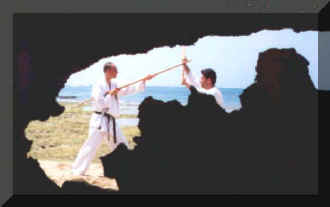

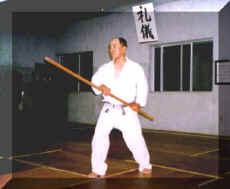

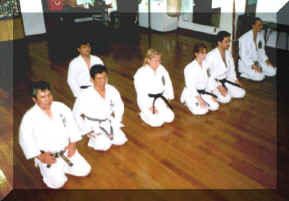
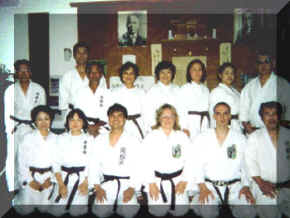
INTERVIEW WITH SHINSHO SHIMABUKU CISO"
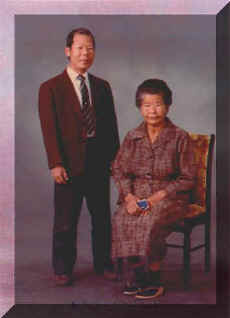
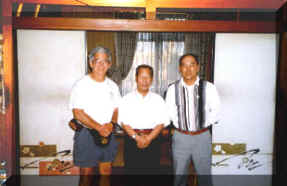
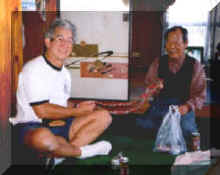
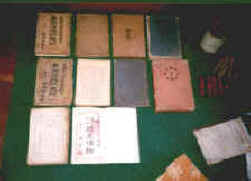
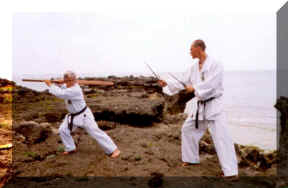

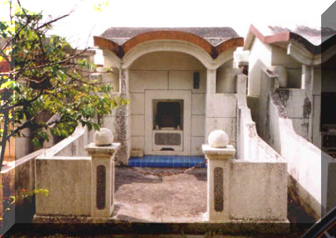
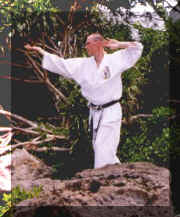
• Especially I want to thank Arcenio J. Advincula for his invitation and coordination of this Tomo no kai trip, his answers to my many questions, karate lessons and 'other' efforts he made for me.
• After this Okinawa trip 1999 I feel a priviliged man who is blessed with a little more knowledge about karate.
Photo: Marien 'Bozu' Jumelet - May 1999
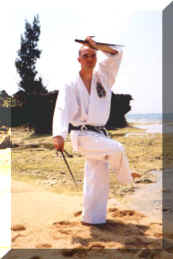
On be halve of the members Sven Festerling held a speech in which he expressed his admiration for the 'man' Marien and the highly motivated karateka Marien who is on his 'way' to the top of the mountain.